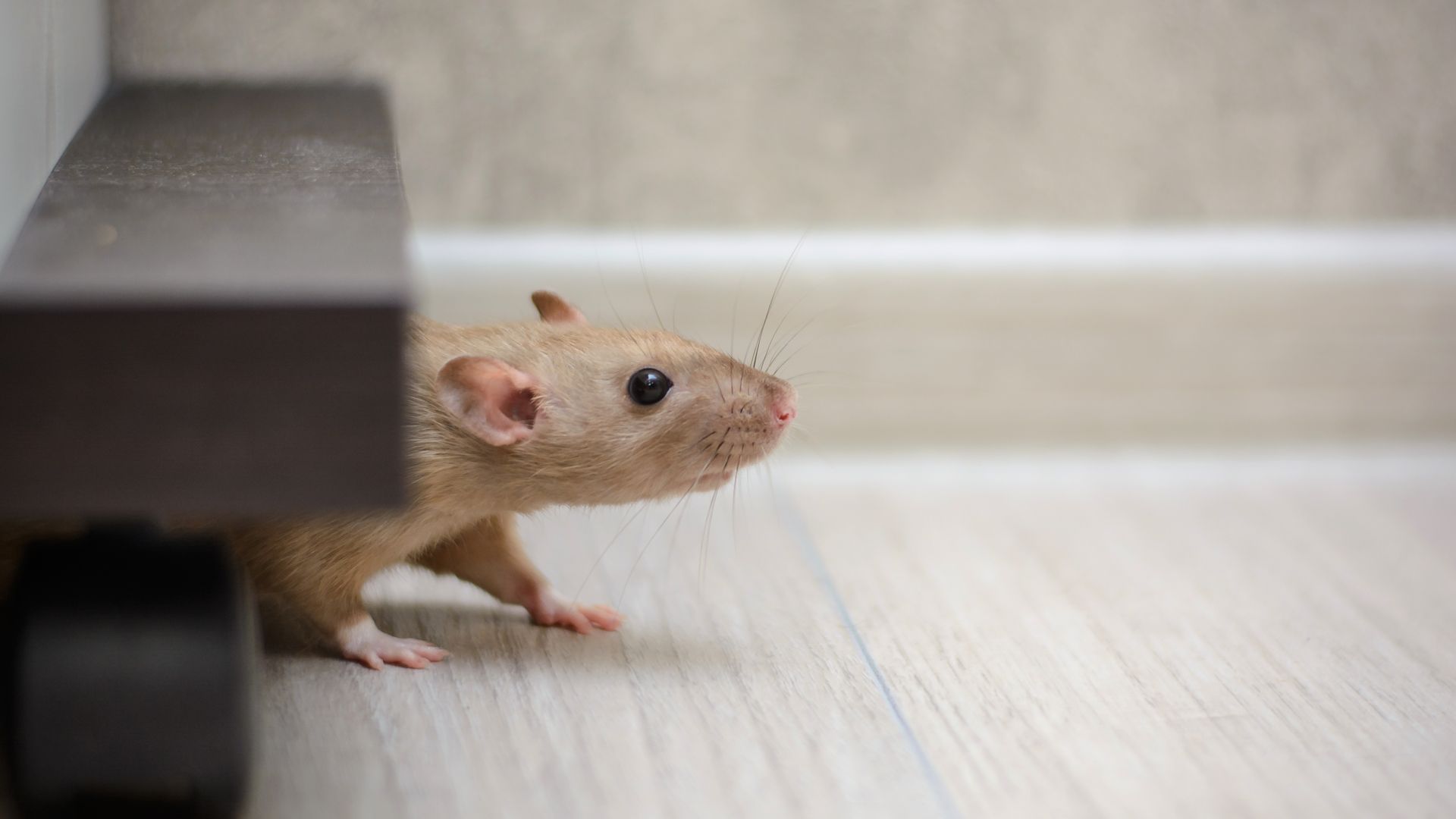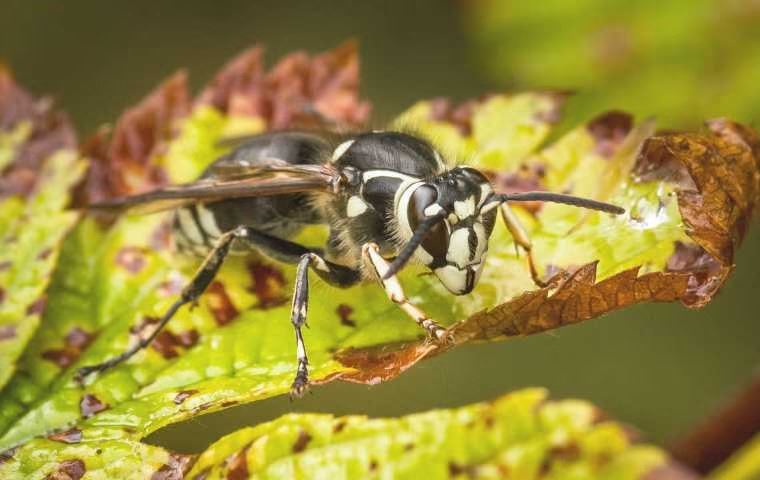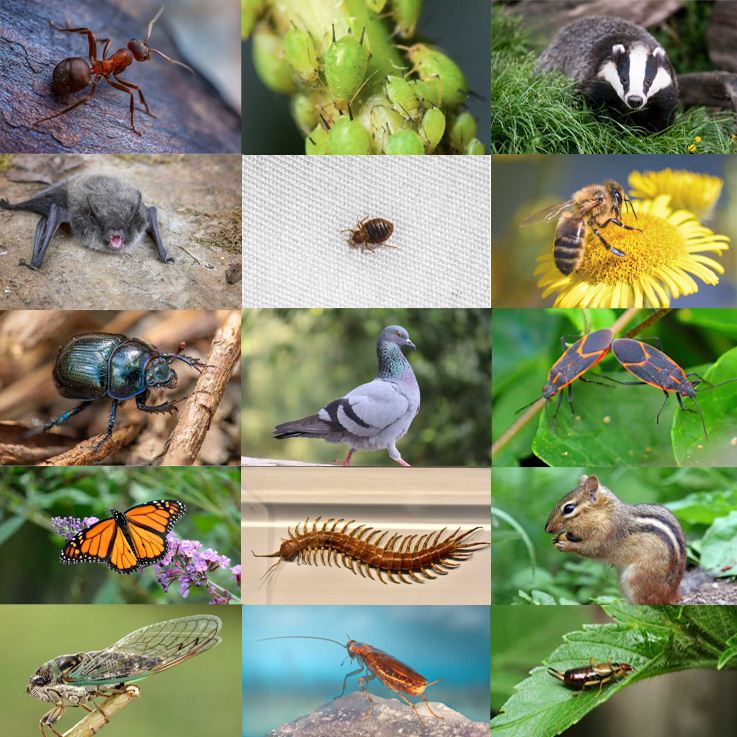
Hornets
What Are Hornets?

Hornets are large, predatory wasps belonging to the family Vespidae, primarily in the genus Vespa. They are known for their striking size, aggressive behavior, and potent stings. Hornets are distinct from other wasps due to their robust bodies, typically measuring 1 to 2 inches (2.5 to 5 centimeters) in length, with a characteristic coloration of black, brown, or reddish-orange, along with pale yellow or white markings. These insects play essential ecological roles as both pollinators and natural pest controllers.
Hornets are social insects and live in colonies, similar to other eusocial wasps, such as yellow jackets and paper wasps. A typical hornet colony consists of a single reproductive female (the queen), sterile female workers, and male drones. The queen is responsible for laying eggs and maintaining the colony, while the workers gather food, defend the nest, and tend to the young.
Hornets are known for their remarkable hunting skills, primarily preying on other insects and even arachnids like spiders. They play a significant role in controlling pest populations, making them beneficial to the ecosystem. However, their stings can be painful and, in some cases, pose a significant health risk, as their venom can cause allergic reactions in some individuals. These stings are equipped with a potent venom that can be delivered repeatedly, unlike the honeybee's single-use stinger. Hornets are generally more aggressive when defending their nests, and they release chemical signals to call for backup when they perceive a threat.
One of the most well-known hornet species is the Asian giant hornet (Vespa mandarinia), infamous for its size and aggressive behavior. It has received substantial attention due to its invasive presence in North America and Europe, where it poses a threat to honeybee populations.
Hornets are large, social wasps that play essential ecological roles as predators and pollinators. While they contribute to pest control and ecosystem balance, their potent stings can be painful and, in some cases, pose health risks, making them both fascinating and occasionally problematic insect pests.
What Types Of Hornets Are There?
There are several types of hornets found across the world. Here are some of the most well-known species:
- Bald-faced hornets (Dolichovespula maculata): These hornets are commonly found in North America, especially in wooded areas. They are black with white markings and can grow up to an inch in length. Bald-faced hornets build large, papery nests that are shaped like a football and can be found hanging from trees, shrubs, or other structures. While they are not typically aggressive, they will defend their nests if they feel threatened.
- European hornets (Vespa crabro): These hornets are native to Europe but have also been introduced to North America. They are brown and yellow with a distinctive pattern on their abdomen. European hornets are larger than bald-faced hornets, with workers growing up to 1.5 inches in length. They build their nests in hollow trees, wall cavities, or other enclosed spaces.
- Ground hornets (Vespula species): These hornets are so named because they build their nests in the ground, often in abandoned rodent burrows or other underground spaces. They are yellow and black and can grow up to 3/4 inch in length. Ground hornets are known for their aggressive behavior and will sting if they feel threatened.
- Japanese hornets (Vespa mandarinia japonica): These hornets are found in Japan, Korea, and other parts of Asia. They are brown and yellow with a large, round head and can grow up to 2 inches in length. Japanese hornets are known for their powerful sting, which can cause pain, swelling, and in rare cases, death. They are also known for their predatory behavior, and will attack and kill other bees and wasps.
- Asian giant hornets (Vespa mandarinia): These hornets are native to Asia, but have recently been introduced to North America, where they are considered an invasive species. They are the largest hornet species in the world, growing up to 2.5 inches in length. Asian giant hornets are aggressive and have a powerful sting that can be deadly to humans. They are also known for their ability to decimate honeybee populations, making them a threat to agriculture and the environment.
Each species has its own distinctive characteristics, but all are known for their aggressive behavior and painful stings.
Hornet Identification
Hornets have distinctive physical characteristics that set them apart from other wasps and insects. Their appearance can vary somewhat depending on the species, but in general, hornets share the following key features:
- Size: Hornets are notably larger than most other wasps and many common insects. They typically measure between 1 to 2 inches (2.5 to 5 centimeters) in length.
- Coloration: Hornets usually have a combination of black, brown, or reddish-brown coloring on their bodies, often with pale yellow or white markings. The specific coloration can vary among different hornet species.
- Head: The head of a hornet is large and typically darker in color, often black or brown. They have powerful mandibles (jaw-like structures) for capturing and consuming prey.
- Eyes: Hornets have large, well-developed compound eyes on the sides of their head, which provide them with good vision.
- Antennae: Like all wasps, hornets have long, slender antennae that extend from the front of their head. These antennae are used for sensory perception.
- Thorax: The thorax, the middle section of a hornet's body, is where the wings and legs are attached. The thorax is robust and helps power their flight.
- Wings: Hornets have two pairs of transparent wings, which are held together by a network of veins. Their wings are longer than those of other common wasps.
- Abdomen: The abdomen is the rear section of a hornet's body and is typically striped with alternating dark and light bands. The number and pattern of these bands can vary depending on the hornet species.
- Stinger: Hornets have a sharp, hollow stinger at the posterior end of their abdomen. Unlike honeybees, hornets can sting multiple times because their stingers lack barbs.
The specific appearance of hornets can vary among different species. For instance, the European hornet (Vespa crabro) and the Asian giant hornet (Vespa mandarinia) have slightly different color patterns and sizes, but they all share the common characteristics mentioned above. Understanding their physical characteristics can be helpful for identification and distinguishing hornets from other insects.
Learn more: What Do Hornets Look Like?
Where Are Hornets Found?
Hornets can be found in various regions around the world, and their specific habitats can vary depending on the species. Here are some common places and environments where you might encounter hornets:
- Wooded Areas: Many hornet species prefer nesting in forested or wooded areas. They often build their nests in hollow trees, tree branches, or other sheltered locations within the forest.
- Orchards and Gardens: In rural and agricultural settings, hornets can be found near orchards and gardens, where they may forage for nectar and hunt for insects among the plants.
- Parks and Natural Reserves: Hornets can also be present in parks and natural reserves, particularly if there are trees and flowering plants that provide food sources.
- Around Buildings: Hornets sometimes build nests in or around human-made structures. They may nest in wall voids, attics, sheds, or under eaves. It's not uncommon to find hornets in residential areas, especially in rural or suburban settings.
- Near Water Sources: Some hornet species are attracted to water sources like ponds, streams, and rivers. They may build nests in close proximity to these areas.
- Urban Areas: Certain hornet species, such as the European hornet, can adapt to urban environments. They might nest in parks, gardens, and even within city limits.
- Underground: Some hornet species, like the bald-faced hornet, construct underground nests. These nests are usually found in soil banks, abandoned rodent burrows, or similar locations.
- High in Trees: In some cases, hornets build their nests high in the treetops, which can make them challenging to spot. They may use branches, shrubs, or utility poles for their nest locations.
- Bushes and Shrubs: While not as common as other locations, hornets may build nests in dense bushes or shrubs, particularly if the area provides good protection and access to food sources.
It's important to exercise caution when encountering hornets, especially near their nests, as they can become defensive and sting if they perceive a threat. Hornets are generally more aggressive in defense of their colonies compared to when they are foraging for food. If you suspect there is a hornet nest near your home or in an area where people frequent, it's advisable to contact a pest control professional or local authorities for safe and effective removal, as hornet stings can be painful and, for some individuals, potentially dangerous due to allergic reactions.

Hear From Our Happy Customers
-
"Professional & Considerate"
I’m pleased with Miche services. Jarvis came today. Professional and considerate. Thank you!
- Judy B. -
"Fantastic & Patient"
Jarvis was fantastic and patient. He answered my questions with an in-depth explanation and addressed all of my areas of concern. Would love for him to be my assigned tech going forward. Well done!
- Yonnette M. -
"Great Communication"
Tech was on time, communication was great, and he accommodated my needs.
- Alonzo W. -
"Exceeds Expectations"
I can’t say enough positive things about this company... The tech that came out, Jarvis went above and beyond my expectations. Thank you guys, I will continue using your services.
- Jake M. -
"Very Knowledgeable"
The tech that arrived was courteous, professional, and very knowledgeable. He was Great.
- Uerial I. -
"Wonderful Service"
Wonderful service. Jarvis is great. Took care of everything I needed. Thank you!
- Henry P.
Are Hornets Dangerous?
Hornets can be considered dangerous under certain circumstances, primarily when they or their nests are disturbed or when individuals have allergies to hornet stings. Here are some of the potential dangers associated with hornets:
Stings:
Hornets possess powerful stingers that can deliver painful and potent venom. When provoked or threatened, they will aggressively defend their nests, and multiple hornets may sting in unison. The venom can cause intense pain, swelling, redness, and, in some cases, allergic reactions. For individuals with allergies to insect stings, a hornet sting can lead to severe anaphylactic reactions, which can be life-threatening.
Defensive Behavior:
Hornets are generally more aggressive when defending their nests. Disturbing a hornet nest can lead to an aggressive response, with hornets attacking perceived threats. Their defensive behavior can make them dangerous to humans and pets in the vicinity of their nests.

Frequently Asked Questions About Hornets
Hornets vs Yellowjackets
The main difference is their size and coloration: Yellowjackets are smaller, often with distinct yellow and black patterns, while hornets are larger and tend to be mostly black with some white or yellow markings.
Learn more: Hornets vs Yellowjackets
Hornets vs Bees
The primary difference is in their appearance: Bees are generally rounder and covered in hair, while hornets are more slender and mostly hairless. Bees are also typically less aggressive.
Learn more: Hornets vs Bees



